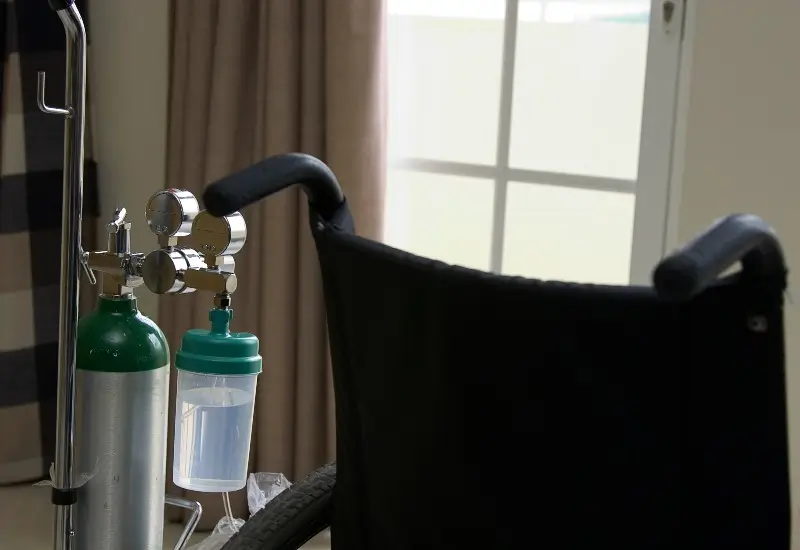How to Turn on an Oxygen Tank

Family caregivers take on countless responsibilities to help their loved ones. Many times, being a caregiver means navigating several types of medical equipment, including oxygen tanks. Unfortunately, education on how to turn on an oxygen tank isn’t always readily accessible, and using this equipment may be intimidating if you’re unfamiliar with it. When you choose Agape Hospice & Palliative Care, you’ll have access to knowledgeable professionals who can help you operate all kinds of medical equipment. Check out our guide to turning on an oxygen tank and tips for avoiding common problems.
1. Inspect the Oxygen Tank
Before turning on the tank, do a quick inspection. Check for all the following to ensure the oxygen tank works as expected:
- Leaks—Listen for a hissing sound around the valve, and consult the user manual or a professional before using a leaking tank.
- Damage—Check for dents, cracks, or compromised areas on the tank.
- Label Accuracy—Check the label on the oxygen tank to confirm it’s medical-grade.
2. Attach the Regulator
Next, you’ll need to attach the regulator—the part that controls the flow of oxygen. Here’s how to do so safely:
- Position the Tank—Put the tank in an upright position and use a weighted stand to keep it stable.
- Align the Regulator—Find the valve’s pinholes on the top of the tank and line them up with the regulator’s pins.
- Tighten the Regulator Clamp—Turn the clamp screw to secure the connection, making sure it’s snug but not overly tight to avoid damage.
3. Attach the Nasal Cannula or Mask
Choose either a nasal cannula (for people needing light oxygen flow) or a mask (for those requiring higher flow rates). Connect the tubing to the regulator’s nozzle and ensure it’s firmly seated to prevent leaks. Try gathering the tubing over your hand to keep it untangled and ready to use.
4. Open the Oxygen Tank Valve
Here’s where many caregivers feel the most apprehensive, but it’s simple when done correctly. Here’s how to turn on an oxygen tank:
- Locate the valve on the top of the tank.
- Use the tank key, placing it over the valve’s square stem.
- Turn counterclockwise slowly. Open it just slightly at first to pressurize the system. You’ll hear a small hiss or click—this is normal. Then, open fully. Avoid opening the valve too quickly, as the sudden pressure could damage the regulator.
- You’ll notice the pressure gauge on the regulator will now display the current pressure, indicating how much oxygen remains in the tank. Green zones typically mean the tank is full, while red indicates it’s approaching empty.
5. Adjust the Oxygen Flow
The flow meter on the regulator allows you to set the oxygen flow rate prescribed by your loved one’s doctor. To adjust the flow, turn the flow control knob slowly. Adjust until the reading shows the prescribed rate—typically between 1 and 5 LPM.
6. Ensure Comfort
Once the system is running, place the nasal cannula in your loved one’s nostrils or fit the mask over their mouth and nose. Adjust the strap on the cannula or mask to avoid irritation, and check for airflow. You can do so by holding your fingers near the cannula openings or mask to feel the oxygen flow. Before finishing, ask your loved one if they feel comfortable and make adjustments as necessary.
7. Monitor Usage
While your loved one is using any type of home medical equipment, be sure to monitor it regularly. Check the oxygen tank’s pressure gauge to make sure it doesn’t run out, and keep the tubing untangled. We also recommend storing spare tanks nearby if you need to make a quick swap.
8. How to Turn Off an Oxygen Tank
When the therapy session ends, or your loved one no longer requires oxygen, follow these steps to turn off the tank properly:
- Turn the flow knob to “0” to stop the oxygen flow.
- Close the main tank valve fully by turning it clockwise using the key.
- Gently bleed the system by turning the flow knob back on momentarily (you’ll hear a hiss). This removes any remaining oxygen in the system.
- Return the flow knob to “0.”
Common Challenges and How to Solve Them
While the oxygen tank instructions may seem straightforward, it isn’t unusual to run into some problems. Take a look at these common challenges and how you can solve them as soon as possible:
The Tank Isn’t Opening
If you can’t turn the valve, check if it’s too tightly sealed or the regulator is misaligned. Disconnect it, realign the pins, and try again. Still stuck? Reach out to the tank’s customer helpline or a professional at Agape Hospice & Palliative Care.
I Think I Hear a Leak
Check the regulator connection and tighten it if necessary. If the leak persists, turn off the tank and use a spare instead.
Is the Tank Empty?
Monitor the pressure gauge. When it dips into the red zone, it’s time to replace the tank. Keep a backup tank ready for emergencies.
Agape Hospice & Palliative Care Is Here to Help
Being a caregiver is an act of love, but no one should do it alone. If you ever feel overwhelmed or want guidance, reach out to Agape Hospice & Palliative Care. We have served countless families in Los Angeles and Orange Counties with exceptional hospice care. Learn more about what we have to offer.


